How to Fix “File System Error -2147163893” on Windows 11 and 10?
Some Windows users are reporting that they’re suddenly unable to download certain items from the Microsoft Store. Each time they try to do so they are halted by the error File System Error (-2147163893). This problem is confirmed to occur on both Windows 10 and Windows 11.
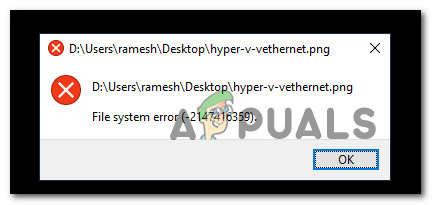
We’ve investigated this problem thoroughly and we realized that there are actually several different underlying causes that will cause the File System Error (-2147163893) on Windows 10 and Windows 11. Here’s a shortlist of possible culprits:
- Corrupted or failing storage sectors – There are certain user reports confirming that in their case, the error was actually being caused by either a failing drive or some corrupted storage sectors that prevented Microsoft Store from installing certain apps or games. If the drive you’re using is just beginning to fail, you should be able to fix the issue by running a CHKDSK scan from an elevated CMD prompt.
- Corrupted Xbox app – If you’re only experiencing this issue while attempting to download games through the Microsoft Store, chances are you’re dealing with a corrupt Xbox App. This is often reported to occur after an upgrade to Windows 11. To fix this problem, you can reinstall the application from the Apps and Features menu.
- System File Corruption – In more serious circumstances, you can expect this problem to occur in situations where your operating system is dealing with some kind of system file corruption that is affecting some dependencies of the Microsoft Store component. To fix these issues, the easiest way to fix this problem is to perform SFC and DISM scans or go for a repair install procedure.
Now that you are aware of every potential cause that might be responsible for this consistent File System Error (-2147163893) error, let’s go over a series of fixes that other affected users have successfully used to get to the bottom of this issue on both Windows 10 and Windows 11.
Run a CHKDSK scan
Before you try any of the other fixes offered in this article, you should start by making sure that you’re not actually dealing with a failing drive.
If you’re only experiencing this issue selectively (only when installing certain programs), you should start by doing a CHKDSK scan from an elevated CMD prompt and see if any storage sectors are affected.
Note: Keep in mind that if this utility finds any problems with storage blocks, it will automatically try to replace the sectors that are going bad with unused sector equivalents.
Follow the instructions below to deploy a CHKDSK scan from an elevated CMD prompt:
- Press Windows key + R to open up a Run dialog box. Next, type ‘cmd’ inside the text box and press Ctrl + Shift + Enter to open up an elevated Command Prompt window.
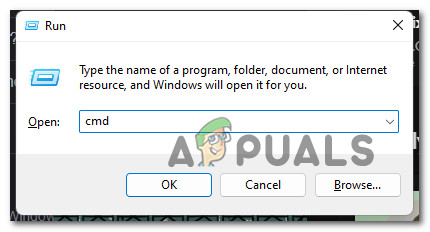
Open up an elevated CMD prompt Note: When you’re promoted by the User Account Control (UAC) window, click Yes to grant admin access.
- Once you’re inside the elevated CMD prompt, type the following command and press Enter to initiate a CHKDSK scan:
chkdsk c: /f /r
Note: This operation will verify the file system integrity of the volume where your operating system is located and fix any logical file system errors that it finds.
- Wait until the operation is complete, then restart your PC and see if the error is now fixed by repeating the steps that we’re previously triggering the File System Error (-2147163893).
If the problem is still not fixed, move down to the next potential fix below.
Reinstall the Xbox App
In case you’re only experiencing this issue while attempting to download a game and the method above didn’t fix the issue, the first culprit you should turn your attention to is the Xbox App. This is a key dependency that the Microsoft Store relies on when you trigger the download of a new game.
If this component is corrupted or unreachable, you can expect to see the -2147163893 system error as the communications between these two components is not possible.
Several users that we’re also dealing with this problem have confirmed that they managed to fix this issue by reinstalling the Xbox app via the Settings menu of Windows.
For complete instructions on how to do this, follow the steps below:
Note: The instructions below will work on both Windows 10 and Windows 11.
- Press Windows key + I to open up the Settings menu on Windows 10 or Windows 11.
- Once you’re inside the Settings menu, click on Apps from the side menu on the left.
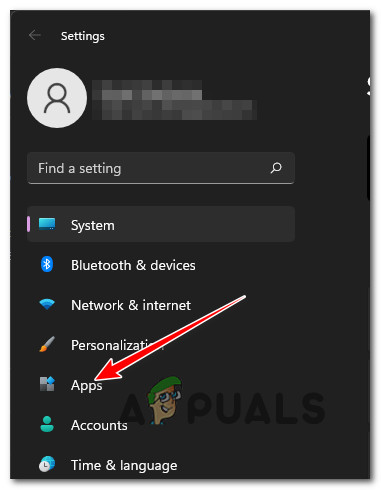
Accessing the Apps menu Note: If the side menu is not visible by default, click on the action button in the top-left section of the screen.
- Next, move over to the right-hand section and click on Installed Apps.
- From the Installed Apps menu, type ‘Xbox’ inside the search function and press Enter.
- From the list of results, click on the action button associated with the Xbox app, then click on Advanced Options from the context menu that just appeared.
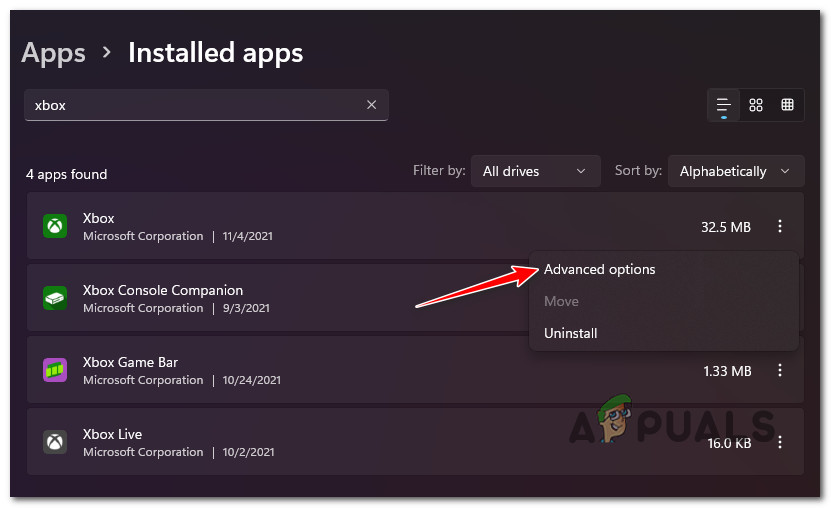
Accessing the Advanced Options menu - Once you’re inside the dedicated Xbox menu, scroll down to the Reset tab and click on the Reset button.
- At the confirmation prompt, click on Reset once again.
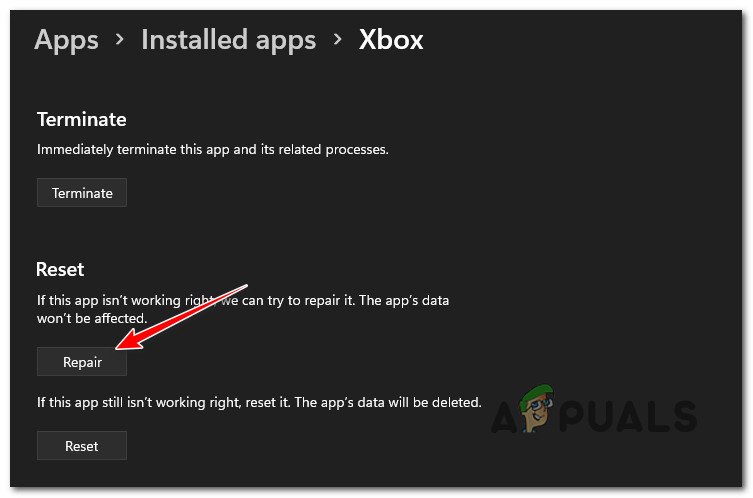
Resetting the Xbox app - Wait until the operation is complete, reboot your PC once again and see if the problem is now fixed.
If the same kind of issue is still occurring and you’re still encountering the -2147163893 system error when attempting to install something from the Microsoft store, move down to the next method below.
Perform DISM and SFC scans
If you’ve come this far without a result, it’s clear that you’re dealing with some kind of corruption that is affecting the installation of UWP (Universal Windows apps) programs.
In this case, the first thing you should try is to run a couple of utilities that are capable of solving non-kernel system file corruption along with logical errors – DISM (Deployment Image Servicing and Management) and SFC (System File Corruption).
Note: SFC uses a local cache of Windows files that will be used on demand whenever the scan finds system file corruption. DISM on the other hand uses a sub-component of Windows Update to download healthy files to replace system file corruption. SFC doesn’t require Internet access but DISM does.
Here’s a quick guide on running both SFC and DISM scans in order to fix the -2147163893 system error on Windows:
Note: The instructions below will work for both Windows 10 and Windows 11.
- Press Windows key + R to open up a Run dialog box. Next, type ‘wt’ inside the text box and press Ctrl + Shift + Enter to open a Windows Terminal app with admin access.
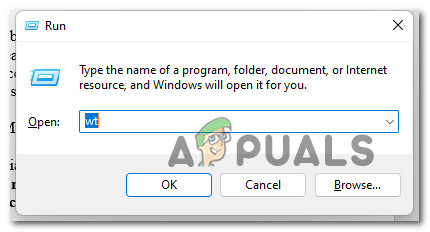
Open up the Windows Terminal app - Once you’re prompted by the User Account Control prompt, click Yes to grant admin access.
- Once you’re inside the Windows Terminal app, type the following command to deploy an SFC scan:
sfc /scannow
Note: Once you deploy this type of scan, don’t close the window until you see the progress bar reaching 100% even if the scan seems like it froze. Closing the window prematurely will run the risk of creating additional system file corruption.
- Once the SFC scan is complete, reboot your PC and wait for the next startup to complete.
- After your PC boots back up, follow step 1 and step 2 again to open another elevated Windows Terminal window.
- Next, paste the following commands and press Enter after each one to deploy a DISM scan:
Dism.exe /online /cleanup-image /scanhealth Dism.exe /online /cleanup-image /restorehealth
Note: Because DISM uses a sub-component of Windows Update to download healthy files in case system file corruption is identified, so make sure you have a stable Internet connection before initiating a DISM scan.
- Once the second DISM scan is complete, do a final system restart and see if the problem is fixed.
If you’re still seeing the same -2147163893 system error even after deploying DISM and SFC scans, move down to the final potential fi below.
Perform a repair install
If none of the methods below have proven to be effective in your case, chances are you’re dealing with some kind of system file corruption that cannot be resolved conventionally.
In this case, the best way to fix the -2147163893 system error without having to clean install is to go for a repair install (in-place repair) process instead.
A repair install procedure will replace every Windows file (including startup processes, boot data, kernel processes, and shared dependencies) without touching your personal files. You’ll get to keep your installed apps and games along with every personal media (even files that are currently stored on the operating system partition).




